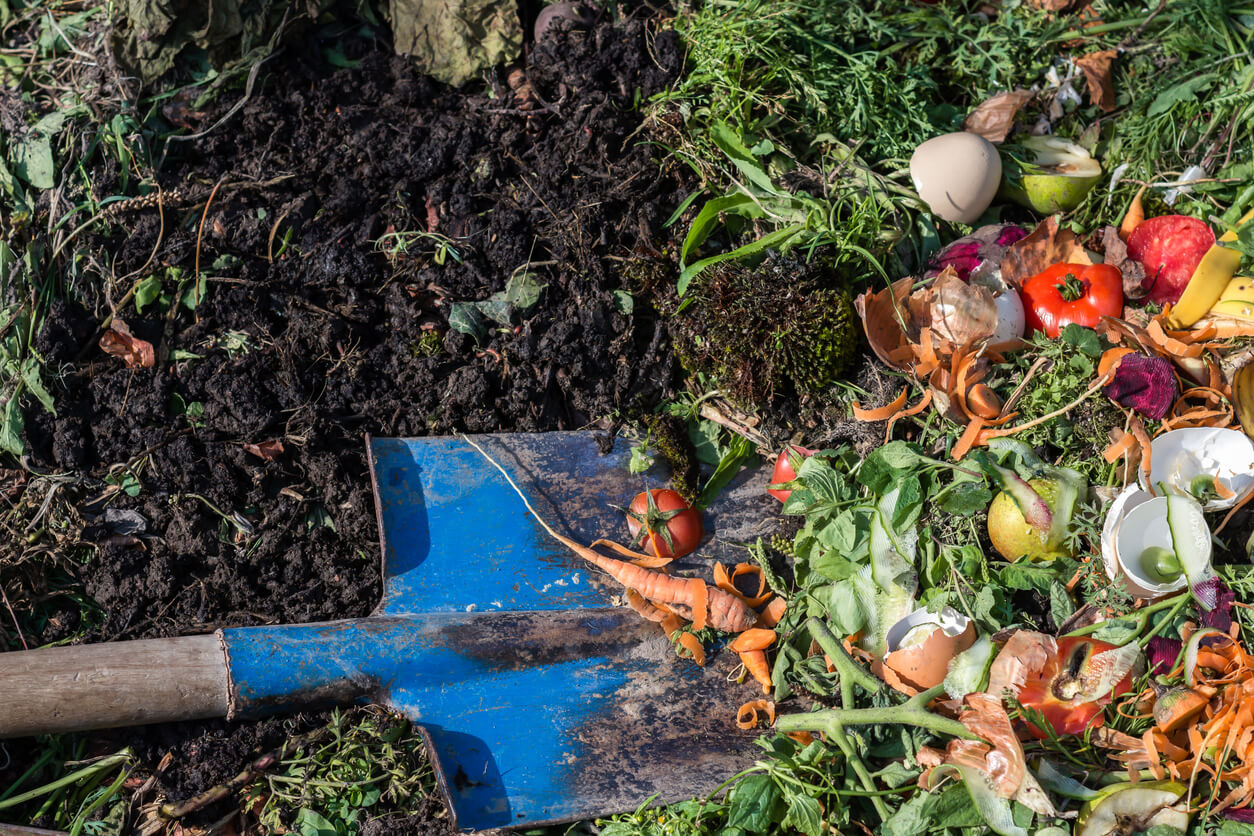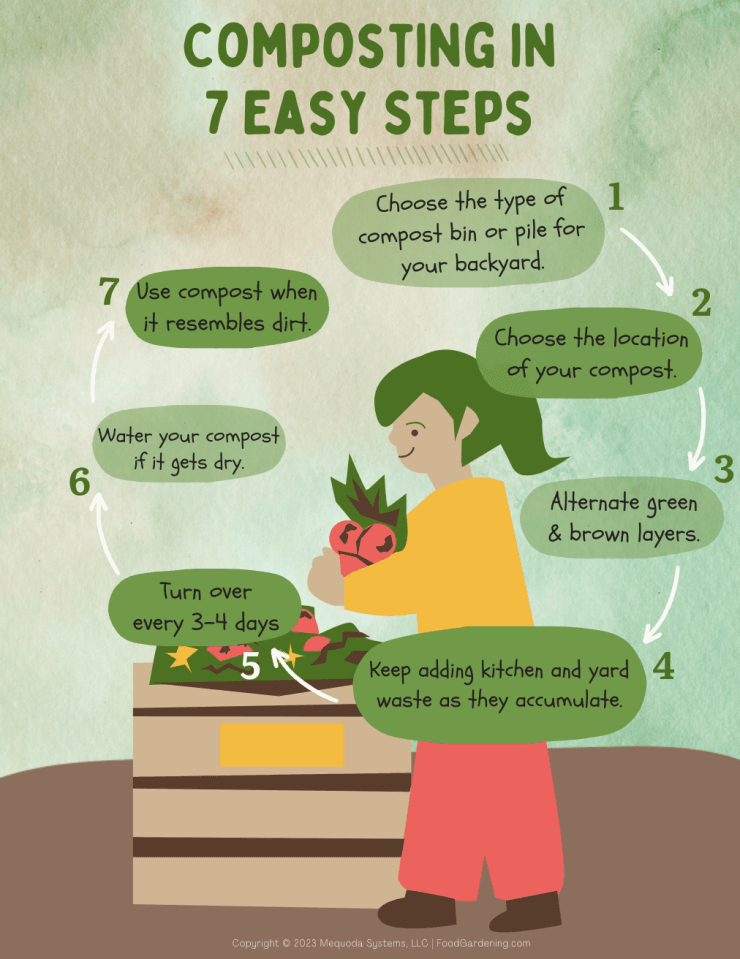
Before we get into how to make compost, let’s look at the reasons why we make compost. In one word: benefits. The first year you use compost in your garden, it will be like someone superpowered your plants. Composting is also incredibly good for the environment for a variety of reasons, not the least of which is reducing landfill usage. So let’s get into composting 101!
One common misconception is that compost is smelly. It can be, but not like you think. It’s really only smelly if your ratios are off (more on that in a minute). And if you use a closed container to compost, the only time you’ll smell much of anything is when you open the container to remove compost or add more materials.
The first part of learning how to make compost is learning what materials are compostable.
Compost is made up of “green” and “brown” matter:
- “Green” matter is new material, such as food scraps, grass, or eggshells.
- “Brown” matter is older, or dead materials, such as dry leaves or cardboard.
You’ll want to layer these materials in your compost bin to avoid smells and slime.
Most gardeners agree that 50-50 is a good mix, but some swear that 70% green is the best ratio. Others swear 70% brown is the best ratio. Mostly, this depends on your climate and environment, but beginner gardeners usually start with 50-50 and adjust from there.
A general rule of composting 101 is that if your compost is slimy, add more brown material. If it’s dry, add more green material.

Now that you understand basic composting consider the next step: doing it! First, decide how you’ll compost. Will it just be a pile on the outskirts of your yard, or will you have a composting bin near the house? Once you’ve made your decision and chosen your location, simply alternate brown and green layers as you compost. Keep adding waste, and depending on your setup (another topic for another day!), you will likely also need to turn your compost or otherwise care for it. If your compost gets dry, water it. Once your compost resembles dirt, it’s ready to use!

If you’d like to download these “Composting 101” charts to hang or share at home or in your classroom, please download them here.
What other composting 101 advice would you add?


 Previous
Previous


I hope you do not promote the use of peat. It needs to stay in the ground! Only 3% of the earth’s surface is covered with peat but that small bit stores more carbon than all the world’s forests. so, “For Peat’s Sake, don’t use peat.”
I believe your graphic with Browns and Greens is switched. Food and Vegetable scraps are usually considered greens, not browns. etc.
Thanks for the catch! Swapped the titles back into their rightful spots!
I always add dry molasses to my compost bin to discourage fire ants from moving in.